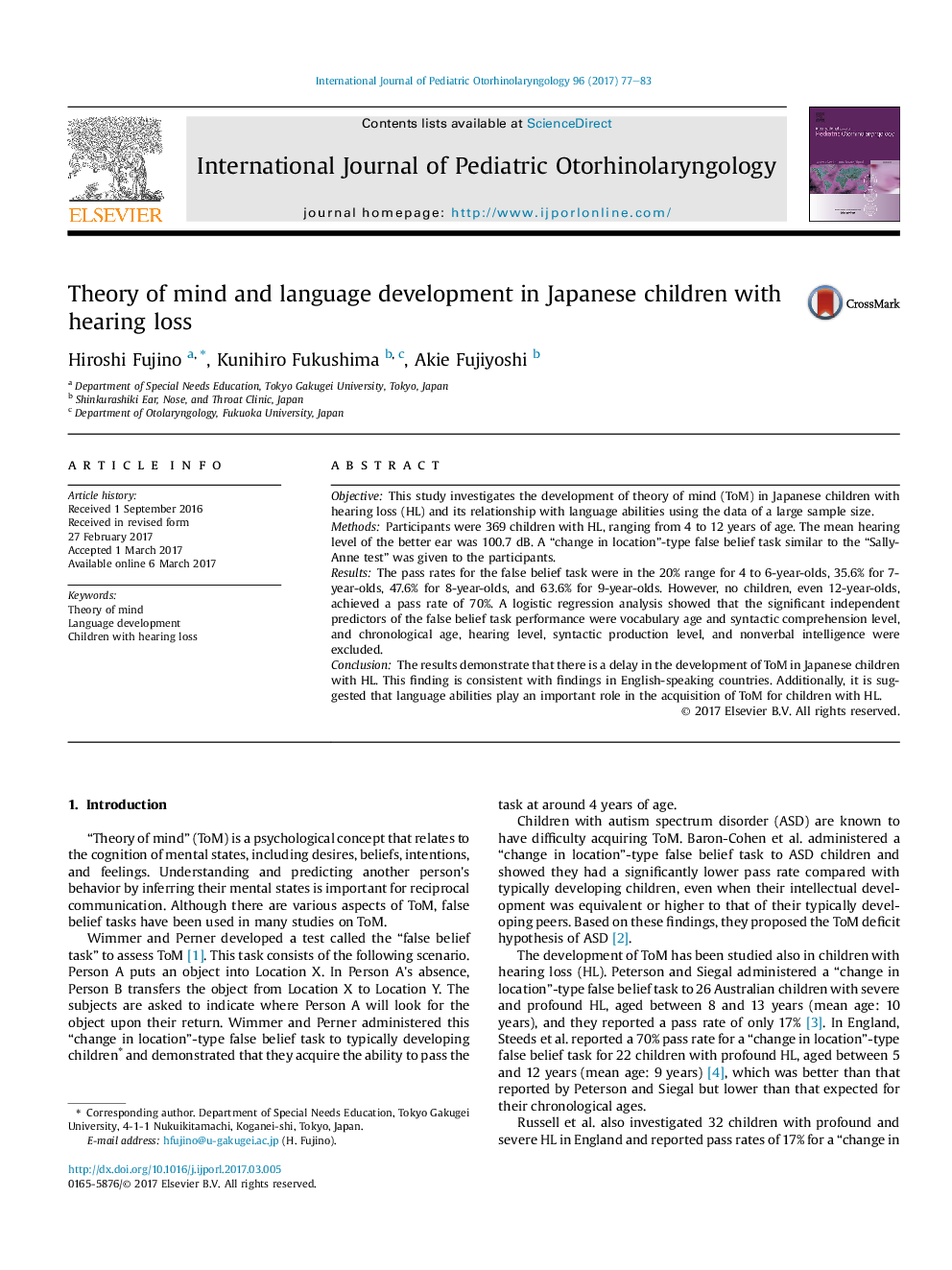| کد مقاله | کد نشریه | سال انتشار | مقاله انگلیسی | نسخه تمام متن |
|---|---|---|---|---|
| 5714770 | 1605972 | 2017 | 7 صفحه PDF | دانلود رایگان |
ObjectiveThis study investigates the development of theory of mind (ToM) in Japanese children with hearing loss (HL) and its relationship with language abilities using the data of a large sample size.MethodsParticipants were 369 children with HL, ranging from 4 to 12 years of age. The mean hearing level of the better ear was 100.7Â dB. A “change in location”-type false belief task similar to the “Sally-Anne test” was given to the participants.ResultsThe pass rates for the false belief task were in the 20% range for 4 to 6-year-olds, 35.6% for 7-year-olds, 47.6% for 8-year-olds, and 63.6% for 9-year-olds. However, no children, even 12-year-olds, achieved a pass rate of 70%. A logistic regression analysis showed that the significant independent predictors of the false belief task performance were vocabulary age and syntactic comprehension level, and chronological age, hearing level, syntactic production level, and nonverbal intelligence were excluded.ConclusionThe results demonstrate that there is a delay in the development of ToM in Japanese children with HL. This finding is consistent with findings in English-speaking countries. Additionally, it is suggested that language abilities play an important role in the acquisition of ToM for children with HL.
Journal: International Journal of Pediatric Otorhinolaryngology - Volume 96, May 2017, Pages 77-83
